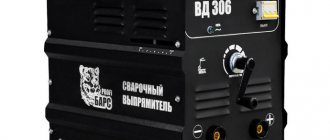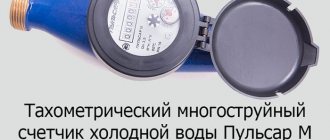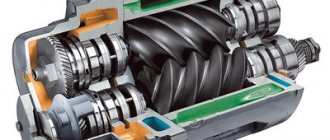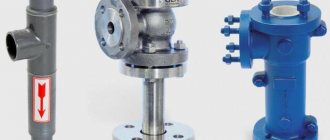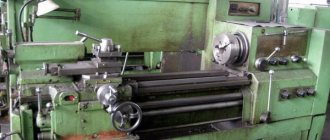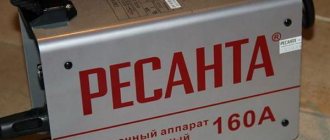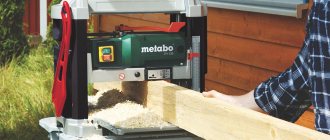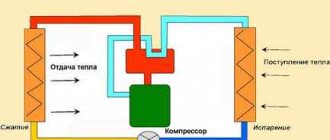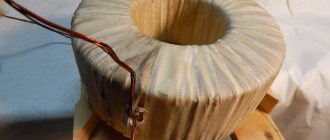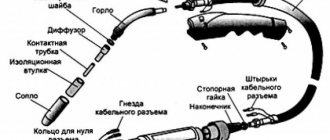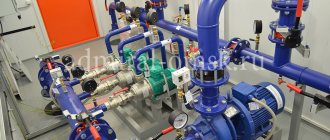Welding rectifier Blueweld Combi 4.135 Turbo
The main structural unit of the welding machine is the power source . The characteristics of this element serve as the basis for the classification of welding installations. The following main types are distinguished:
- transformers;
- rectifiers;
- inverters;
- generator sets running on diesel or gasoline fuel.
Here we will dwell in detail on the features of rectifiers.
*
The device, what it consists of
Welding rectifier Telwin LINEAR 410 S
The welding rectifier consists of the following components and blocks:
- power transformer. In design and principle of operation, it is similar to a transformer for alternating current welding;
- rectifier unit on semiconductor devices. To convert alternating current into direct current, semiconductor elements are used: uncontrolled valves - silicon diodes;
- controlled valves - thyristors;
It is advisable to use a three-phase rectifier , i.e., equipped with a three-phase transformer.
In this case, the ripple of the rectified voltage will be significantly lower, which increases the efficiency of the welding device and improves the quality of the weld.
Basic malfunctions and maintenance of welding machines
Before connecting to the network for the first time, new converters must be purged. An ordinary household hair dryer is suitable for these purposes. It is turned on at maximum speed at an average warm-up level. This is done in order to dry any possible accumulation of moisture inside and remove dust that reduces the resistance of the copper winding. Blowing should be repeated approximately once a quarter.
If there was a long break in the operation of the equipment (up to 1 year), then before turning it on you need to “pump” the semiconductors. The essence of the procedure is to let the rectifier operate in different modes, starting with idle. This “break-in” lasts approximately two hours. After this, the welding machine will work flawlessly and stably under different conditions. It is necessary to monitor the condition of the main components and prevent the equipment from overheating.
The most common malfunctions of welding equipment and ways to eliminate them:
- The equipment does not work when connected to the power supply. Possible reasons:
- fracture of the supply wiring strand. In this case, the contacts in the plug “dangle”. The plug needs to be replaced;
- no voltage in the network. You should check the switch at the entrance and make sure it is turned on;
- One of the system nodes has failed. It will be very difficult to repair it yourself without proper training. It is better to take the device to a workshop;
- The semiconductor resource has been exhausted. The circuit needs to be re-soldered.
- The electrodes stick and at this moment the hum of the converter is heard. What you can do:
- check the serviceability of the capacitor and semiconductors;
- measure the performance of the power supply network and make sure that the voltage corresponds to the nominal value;
- make sure the throttle wiring is intact.
- During operation, the inverter switches off unexpectedly. This may happen:
- in case of overheating. You should make sure that the cooling system and fan are in good working order;
- if the integrity of the winding of the built-in transformer is damaged. You need to replace the old one with a new one.
- The voltage is unstable when operating under load or at idle speed. You should check:
- regulator knob;
- fuse installed on the primary winding;
- reliability of starter terminal contacts.
If the welding machine no longer maintains the required operating parameters, overheating may be the likely cause. To verify this, just touch the body. If it is hot, then you need to give the generator a break and check how freely air flows to the fan.
Principle of operation
One of the elements of the rectifier device is a step-down transformer with three windings and a control unit. The most common rectification circuits are single-phase and three-phase bridge, with a full-wave rectifier. The three-phase bridge circuit ensures uniform loading of all phases of the power network and greater arc stability with fewer valves.
When using this circuit, at a certain point in time, two elements connected in series with the load conduct current; in one period exactly six pulsations of electric current occur. Thus, the arc is powered by a direct, rectified current flowing through the secondary winding circuit.
Purpose
The welding rectifier is a device designed for steel and metal structures; an energy source for the welding arc, using semiconductor elements that converts the alternating current of the network into a direct welding current that does not change its direction and magnitude.
Welding rectifier Brima VDM 1203 (380 V). Photo Welding Technologies
What type of welding are they used for?
Most welding technologies are produced using this equipment. These include MMA (manual arc welding with a coated electrode), MIG (fusion gas welding), TIG (non-consumable electrode argon arc welding). The use of rectifiers makes it possible to weld not only ferrous metals, but also stainless, heat-resistant and heat-resistant high-alloy steels, cast irons, non-ferrous metals, aluminum and titanium alloys.
What electrodes are used
Welding can be done with any type of electrode:
- DC welding electrodes (for example: UONII-13/55 or UONI-13/55);
- universal electrodes (for example: ANO-4, MR-3 or OZS-12);
- special electrodes.
General information about the device and its purpose
The welder knows what a welding rectifier is: the device looks like a converter unit with voltage and current regulation.
At the output of the rectifier there are 2 wires with negative and positive terminals. When one of them is connected to the electrode, and the other to the workpiece, a powerful electric arc is excited, melting the metal.
However, the assembly principle of all devices is the same: a transformer that produces the required voltage is included in the circuit along with semiconductors that pass the positive component of the current sinusoid.
What types of welding is it used for?
The rectifier for the welding machine is used in the following technological processes:
- Electric arc method using electrodes treated with various compositions. Through the use of such rods, a stable arc is maintained. This helps to obtain a uniform, strong seam.
- Welding large metal parts. Adjusting the current parameters allows you to work with workpieces up to 5 cm thick. At the same time, the device is also used for joining thin-walled parts. The installation of a rectifier explains the expansion of the scope of application of welding units.
- Melting of the edges of the workpieces or the core of the electrode used.
- Welding using filler wire. Rectifiers are indispensable when working with infusible tungsten-coated electrodes.
- Connecting parts made of stainless, low-carbon steel, cast iron, and difficult-to-weld alloys.
- Cutting metal blanks. To do this, the current strength is increased, due to which the arc begins to burn through the material.
Suitable electrodes
For welding with a rectifier, rods of any brand can be used:
- electrodes operating with constant parameters (UONI-13/55);
- universal rods (OZS-12, MR-3, ANO-4);
- specialized electrodes.
Electrodes for welding
Differences and advantages of DC welding
Arc welding of steels
Welding with direct current has a number of advantages compared to a similar process with alternating current:
- The welding arc burns stably; the improvement of this indicator is influenced by the absence of zero instantaneous welding current values;
- the depth of penetration has been increased ;
- metal is splashed significantly and losses are reduced;
- the strength of the weld is much higher;
- the number of seam defects is reduced.
Types of devices
There are simply a huge number of varieties of the equipment in question on sale, all of them have their own specific advantages and disadvantages. The classification of industrial welding rectifiers is as follows:
- single-phase;
- two-phase;
- three-phase.
A rectifier for three-phase manual arc welding consists of 6-12 diodes, which are often connected in parallel. Two-phase ones are characterized by parallel and series connection of bridges.
Controlled and uncontrolled rectifiers
In addition, classification can be carried out according to the following criteria:
- Output current. With an increase in this indicator, the thickness of the processed metal increases significantly. If the device produces a small current, then it will be possible to process thin elements. Also, too high a current allows the use of a welding machine for cutting metal.
- Adjustment accuracy. As previously noted, the rectifier can be used to set a wide variety of current parameters. The higher the adjustment accuracy, the more optimal working conditions the master can provide for himself.
- Number of outputs for connection. Sophisticated welding equipment can be used to connect multiple electrode holders simultaneously. A similar model may be needed when several welders are simultaneously working nearby. However, due to the complexity of the design, it becomes larger and more expensive.
- Cooling efficiency. Inexpensive models are intended for domestic use, as they can be used for a short period of time. This is due to the fact that the design does not have an effective cooling system. Professional equipment can be used for welding over a long period.
- Design dimensions. As a rule, welding work is carried out on site. Delivery of all equipment may be difficult if it is heavy and large in size. There are compact models on sale that are easy to transport.
Three-phase models are very popular. This is due to the fact that they can be used to work with metal of a wide variety of thicknesses. A single-point rectifier is most suitable for domestic use, since it is used when using only one electrode holder. There are also models on sale that allow you to connect several electrode holders simultaneously.
Universal modern welding rectifiers are produced by a fairly large number of different manufacturers. Brands largely determine the build quality, service life and cost of equipment.
An inverter rectifier is suitable for domestic use. Such models can be characterized as follows:
- The transformer is responsible for reducing the voltage.
- A rectifying unit is installed, which is responsible for supplying constant voltage.
- Next, it is converted to high-frequency alternating electricity.
Welding rectifier
Such equipment requires the use of alternating current. However, due to a significant increase in the frequency of the supplied current, it is possible to use an inverter rectifier to obtain high-quality connecting seams. Due to the significant simplification of the design, the inverters are relatively small in size and are also easy to operate.
Where is the equipment used?
The advantages of DC welding over AC welding allow its use when making critical connections. It is used when welding the following metals:
- heat-resistant, high-alloy, low-carbon, corrosion-resistant steels;
- titanium;
- cast iron;
- alloys based on copper and nickel and much more.
DC welding is widely used in all areas of industry, in large enterprises, construction sites, small workshops, among home craftsmen in country houses and garages.
Advantages and characteristics over transformer devices
Unlike transformers, rectifiers provide much more powerful energy indicators , have a wider range of control limits, they are much simpler and more reliable to use , have less weight and dimensions, are more economical in manufacturing, and, what is undoubtedly pleasant, they are almost silent . Since the current flows continuously, the depth of metal penetration increases, welding proceeds stably, and the strength and quality of the seam increase.
Welding rectifier SiMZ VD-306 ST. Photo 220Volt
Classification by type: multi-post, single-post and others
There are several types of welding rectifiers.
Welding station is a welder’s workplace. Rectifiers have designs that can serve both one post and several at the same time. If everything is clear with one post, then how a group of posts functions without influencing each other needs to be explained.
Welding 4-station rectifier VDM-6303S. Photo VseInstruments.ru
Independence in operation is determined by the constant open circuit voltage of each post . This is ensured by a rigid current-voltage characteristic. With a falling characteristic, a short circuit at a single station would reduce the voltage at other posts and stop welding. Each post has an additional variable resistance to regulate the current.
A multi-station welding rectifier is used in industrial settings . Single-station welders are used by non-professional welders.
Welding rectifier ETA VD-306 B 3x380. Photo VseInstruments.ru
The main property for classifying welding rectifiers is the difference in the characteristics of the output rectified voltage from the welding current. Depending on this characteristic ( flat, steep or universal ), the applicability of the rectifier to one or another welding technology is determined.
Steeply falling characteristic - for manual arc welding with coated piece electrodes, argon arc welding with tungsten electrodes, mechanized submerged arc welding on machines with regulation of the electrode wire feed depending on the arc voltage.
Rectifiers with a flat-sloping characteristic are used for mechanized welding with a consumable electrode in a shielding gas environment or submerged arc, at a constant wire feed speed, independent of the arc voltage. The manufacturer obtains these characteristics by adjusting the transformer, adjusting the inductive reactance of the inductor, or using semiconductor devices. First of all, it is important to know what kind of work the welding rectifier is suitable for and its parameters.
- Transformer. Moving coils are located inside the power transformer. Primary adjustment is made by switching the windings from a star to a delta circuit. Fine adjustment occurs by changing the distance between the windings.
- Transistor. A semiconductor operates on the switch principle. The transistor is configured for a certain current value. In this case, the regulation of the strong current occurs at the expense of the weaker one. This control method expands the range of applied welding currents.
- With saturation throttle adjustment. Typically, the inductor (inductive reactance) is located between the transformer and the rectifier unit. The power transformer produces constant voltage. The use of inductive reactance allows you to change the parameters and the rectifier will already operate on a falling current-voltage characteristic.
- Thyristor. Here the voltage and current are controlled using an electronic circuit. The circuit has a trimming element through which the voltage and current supplied to the electrode at the welding site are adjusted.
- Inverter welding rectifiers. The welding current is adjusted according to a completely different principle. Electronic devices are capable of autonomously regulating high-frequency welding current and avoiding increasing current by reducing voltage.
Inverter rectifier Battleship VD-201I. Photo Welding Technologies
Welding rectifiers are divided into household ones , with a power not exceeding 200 A, semi-professional (power up to 300 A) and professional (over 300 A). Models differ in power, size and amount of energy absorbed.
Welding inverter rectifier Foxweld VD-306I, maximum current – 315 A. Photo VseInstruments.ru
Basic technical data of rectifiers: supply voltage and no-load voltage, maximum operating power, power consumption, type of welding current, electrode diameter, weight and dimensions. Different types of rectifiers are designed for different jobs - for example, VD2-313 is used for two-station arc welding of steel objects, and VDU-506 is a universal rectifier, capable of completing automatic welding machines and powder welding.
Different types of rectifiers are designed for different jobs - for example, VD2-313 is designed for two-station arc welding of steel objects, and VDU-506 is a universal rectifier, capable of completing automatic welding machines and powder welding.
Rectifier - what is it?
A welding rectifier is a device consisting of several blocks in which the incoming voltage is reduced (V) and converted. At the same time, the value of A increases. As a result, the output produces a direct current of sufficient strength to weld steel and non-ferrous metals.
Two cables (+ and -) are connected to the output terminals of the device, one of which is attached to the workpiece being welded, and the second ends with a holder or torch. Depending on the specific pole of attachment to the parts being welded, the polarity and mode of operation are determined. Welding occurs by closing an arc between the surface to be joined and the end of a consumable electrode.
Adjusting the welding current
The welding current in the rectifier is adjusted using electromechanical or electrical methods. Electromechanical adjustment of welding current involves performing this operation before the rectifier unit . In this case, the rectifying valves are supplied with alternating current, which already has the parameters required for welding. Electrical adjustment is possible on rectifiers equipped with thyristors, and consists of changing the angle of their adjustment.
How to connect a ballast, ballast rheostat
Ballast rheostat (ballast) is a circuit device with a welding rectifier, with the help of which the welder adjusts the current. The regulation principle is based on the action of Ohm's law, known in electrical engineering. The higher the resistance that the ballast represents, the lower the current.
Ballast rheostat Ballast rheostat Brima RB-302. Photo VseInstruments.ru
Typically, a ballast is a spring, the efficiency of which depends on the optimally selected length of the spring, the diameter of the coils and wire, as well as the material from which it is made. A regulator contact is connected to the spring, moving it in the direction of winding changes its resistance, and therefore the current strength. The regulator contact is connected to the wire of the welding machine holder. The other end is connected to the power supply.
Pros and cons of equipment
The advantages of rectifiers include:
- high power with compact dimensions;
- ability to generate current with constant parameters;
- supply of a unipolar charge to the electrode, facilitating the rapid appearance of an arc;
- economical consumption of electrical energy;
- reduced risk of accidental fire;
- the ability to control the quality of the seam at the stage of its formation;
- expanding the functionality of the equipment;
- reduced consumption of filler wire (savings become noticeable when using a rectifier in an industrial environment).
Along with the positive qualities of the device, there are also negative aspects, which include:
- loss of power;
- deterioration in the quality of operation of the device when the network voltage decreases;
- instability to moisture;
- sensitivity to short circuits in the power supply network.
Seam quality.
With your own hands
Practice has shown that some people successfully cope with the independent production of welding rectifiers. The main thing is to develop a workable scheme . The main initial parameters will be the diameters of the electrodes with which the rectifier is designed to work. So, for example, if it is 3 mm, then the welding current must be provided at about 150 A, if it is 4 mm. – 200 A.
The diagram must indicate the parameters of the following elements:
- Transformer. It is advisable to select a circuit from ready-made devices. However, this condition is not easy to fulfill; you have to learn how to make a transformer yourself. Calculating its elements (core cross-section, number of turns on the windings and wire sizes) is not that complicated. Assembly and installation experience is quickly gained after one or two unsuccessful rewinds.
- Rectifier block. Voltage is supplied after the secondary winding of the transformer. The following elements are used for operation: diodes;
- capacitor;
- throttle.
The diodes are assembled using a bridge circuit. After it, the current is not alternating, but pulsating. This current is not suitable for welding, so there is a capacitor . It smoothes out pulsations . Finally, direct current is obtained using a choke. The inductor works as a filter , which passes the direct component of the current, and delays the variable.
Welding rectifier BLUE WELD KING TIG 200
Diodes operating at such high currents generate a lot of heat. Therefore, they are necessarily included in the assembly complete with cooling radiators. It is important to consider forced airflow of the welding machine from a fan.
The capacitors for the welding unit are designed for the maximum ripple voltage. For the rectifier unit, they differ from those used in radio engineering, which do not work with pulsed currents.
Important! Pay close attention to the characteristics.
To make a choke, you need a core made of transformer iron and an insulated copper busbar (you can use a core twisted from tinned copper wires with insulation). The cores can be used from old radio equipment. The choke core and winding are assembled with a gap . After testing the device, the gap and number of turns in the winding can be adjusted.
- Welding rectifier base. The textolite plate has excellent insulating properties. It is not advisable to place devices on it close to each other. During operation, a large amount of heat is generated, so it is necessary to have a sufficiently large ventilated space.
There are many options for making a welding rectifier with your own hands. They will differ in design due to the way they are regulated. The contractor will develop his own design in relation to the specifics of the work performed.
Multi-station welding rectifiers - counting work stations
Three-phase networks also allow you to connect multi-station welding machines. The power of a household, single-phase 220 Volt network is simply not enough for such a powerful load. To ensure the operation of all posts, the rectifiers have a rigid external Volt-Amp characteristic. Each welding lead has its own rheostat and choke for individual adjustment.
Their advantage is lower equipment maintenance costs, and their scope of application is welding sites with a large volume of work. These could be construction sites where complex metal structures are being installed or shipyards. That is, the area of application is industry, but not everyday life. The number of connected welding stations for a multi-station rectifier will be calculated using the formula:
- n= Ivyp/k* Iload;
- where Ivypr is the rated current for which the rectifier is designed;
- Iload – current required for one post;
- k is a coefficient that takes into account the simultaneous operation of posts; for mechanical welding it is taken within the range of 0.5-0.7.
Brands, models
Welding rectifier BRIMA MIGSTAR-160
Popular models of welding rectifiers include:
- welding rectifier brand Telwin model LINEAR 410 /S. Parameters: 15000 W, 350 A.
- welding rectifier for argon arc welding brand Blue Weld KING model TIG 200 AC/DC-HF/Lift 832200.
- welding rectifier brand Blueweld model Combi 4.135 Turbo.
- welding rectifier brand BRIMA model MIGSTAR-160 .
A complete list of brands and models of equipment for DC welding is presented on the official websites of suppliers.
